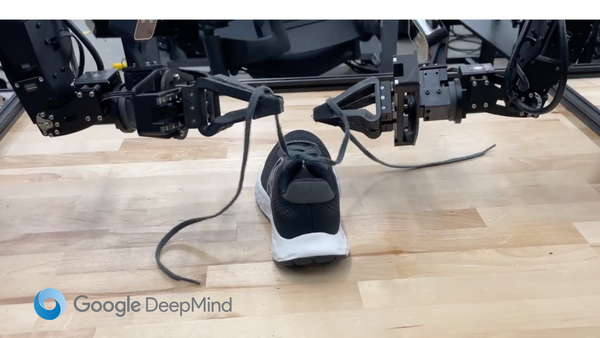Uh Oh! Humanoid Robot Training Has a Problem
An on-going fight for robot training data, Microsoft teams up for robot research, and CyRo is launched.

Fighting for Humanoid Robot Training Data
The race to advance robotic capabilities is intensifying, driven by the need for more varied and complex training data. This data is crucial for teaching robots to interact with the physical world more naturally.
However, acquiring such data involves navigating ethical and legal challenges and practical difficulties in gathering sufficient quality data.
WHAT YOU NEED TO KNOW
- Data Acquisition Challenges: Robots require diverse real-world data to handle tasks in unfamiliar environments, but this data is scarce and difficult to collect. Companies resort to creative methods like teleoperation and using robots in varied scenarios to gather it.
- Ethical and Legal Concerns: Pursuing more training data raises significant ethical and legal questions similar to those faced in developing AI language models. Issues include privacy, copyright, and the use of public video content.
- Technological Innovations and Collaborations: Efforts to overcome these challenges include innovative data collection techniques and open-source collaborations that allow for the sharing of teleoperation data, enhancing the efficiency of robot training.
WHY YOU SHOULD CARE
Understanding the complexities of training data acquisition for robots is crucial because:
- Impact on AI and Robotics Progress: The quality and variety of training data directly influence robots' capabilities and versatility. Advances in how robots learn from data can lead to more autonomous, efficient, and useful robotic systems.
- Ethical and Legal Implications: As robots become more integrated into everyday life, their training methods and the data they learn from will have broader social and legal implications. This includes concerns about privacy and the potential misuse of public data.
- Future Technological Landscape: Companies' strategies for gathering and utilizing training data will shape the future of the robotics industry. This impacts the development of new robotic technologies and their application across various sectors, from domestic aid to industrial automation.
Microsoft Teams Up Sanctuary AI for Robot Research
Microsoft announced a strategic collaboration with Sanctuary AI, focusing on advancing general-purpose robotics powered by artificial general intelligence (AGI). This partnership aims to enhance humanoid robots' capabilities to perform a wide range of tasks, much like humans.
Sanctuary AI, known for its humanoid robot Phoenix, is leading this ambitious project, which could significantly impact the future of robotics.
WHAT YOU NEED TO KNOW
- Strategic Collaboration: Microsoft has teamed up with Sanctuary AI to develop AI models that enable humanoid robots to achieve general-purpose status, meaning they could learn and reason similarly to humans.
- Sanctuary AI’s Role: Known for the humanoid robot Phoenix, Sanctuary AI brings expertise in designing robots capable of performing complex tasks across various industries. Recent pilot projects, like with Magna in car plants, support this.
- Investment in AGI: The focus on artificial general intelligence reflects Microsoft’s commitment to pushing the boundaries of what robots can do, aiming to transform them from specialized tools to versatile, intelligent machines.
WHY YOU SHOULD CARE
The collaboration between Microsoft and Sanctuary AI is noteworthy for several reasons:
- Potential for Innovation: The partnership could lead to breakthroughs in humanoid robotics, making robots more adaptable and capable of handling diverse tasks beyond current capabilities.
- Impact on Industries: As these robots evolve, they could be deployed across numerous sectors, potentially automating complex processes and enhancing productivity in ways that were previously not feasible.
- Future of Work and AI: The development of general-purpose robots equipped with AGI could reshape the workforce, requiring new skills and creating new opportunities. This evolution will likely influence global labor markets and necessitate significant shifts in workforce training and development.
CynLr Launches A Vision-Guided Robot Platform Called CyRo
CynLr, an Indian deep-tech robotics startup, has introduced 'CyRo,' a semi-humanoid, multi-arm vision-guided robotic manipulator, at the Robotics Summit & Expo in Boston. CyRo is designed to handle objects under varied lighting conditions without requiring specific lighting setups, managing even reflective items.
This launch marks a significant advancement in Visual Object Intelligence Robotics and offers broad applications across several industries.
WHAT YOU NEED TO KNOW
- Advanced Object Handling: CyRo can identify and manipulate objects it has never encountered before, functioning effectively under extreme lighting variations. This capability extends to handling objects in reflective packaging, a common challenge in automated settings.
- Versatile Applications: The technology is poised to revolutionize operations in warehousing, manufacturing, and more, with abilities ranging from piece-picking and sorting to complex assembly tasks.
- Technological Innovation and Support: Developed in CynLr's state-of-the-art R&D center in Bengaluru, CyRo's technology integrates contributions from over 250 partners globally. The project has attracted significant investment, underscoring its potential impact on industrial automation.
WHY YOU SHOULD CARE
The launch of CyRo represents a crucial development in robotics that stakeholders in the technology and manufacturing sectors should monitor closely:
- Innovation in Robotics: CyRo's ability to operate under diverse conditions without needing customized setups introduces new flexibility and efficiency in robotics applications, potentially setting new industry standards.
- Impact on Industrial Automation: With its adaptable applications, CyRo could create 'universal factories' that are product-agnostic, significantly altering the landscape of manufacturing and related industries.
- Market Dynamics: As CyRo begins to influence the market, its widespread adoption could drive changes in supply chain logistics, production methods, and overall industry competitiveness, making it a critical point of interest for investors and industry leaders.



